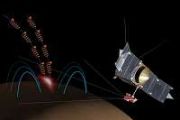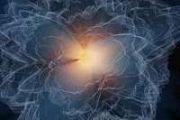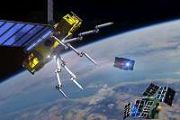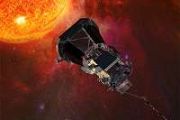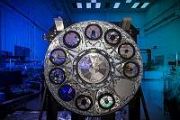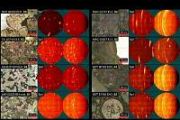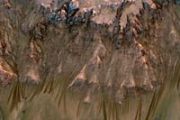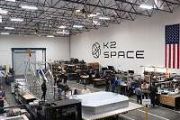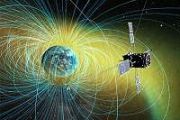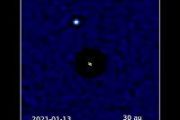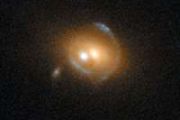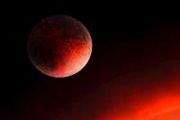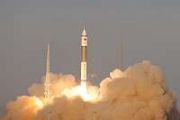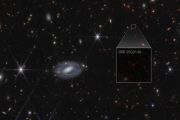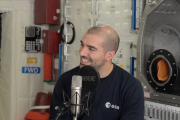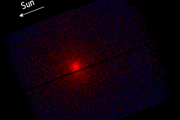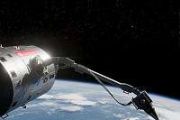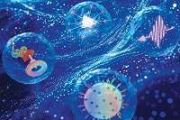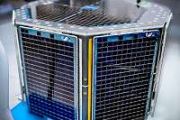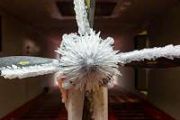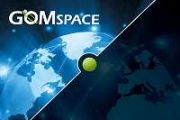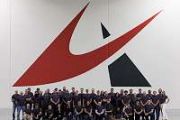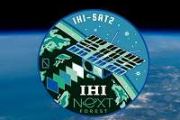
Copernical Team
Fly over Xanthe Terra with Mars Express
 Video:
00:03:16
Video:
00:03:16
ESA’s Mars Express takes us on another mesmerising flight over curving channels carved by water, islands that have resisted erosion, and a maze of hilly terrain.
Central to the tour is a 1300 km-long outflow channel called Shalbatana Vallis. It cascades down from the highland region of Xanthe Terra to the smoother lowlands of Chryse Planitia.
Billions of years ago, water surged through this channel, creating many of the features we see today.
The tour culminates in a spectacular view of a 100 km-wide impact crater, smashed out of Mars’s surface when it collided with a space rock.
Enjoy the flight, and be
Pulsar Fusion to Demonstrate Advanced Propulsion on Momentus Vigoride Mission
 Momentus Inc. has signed a contract to launch a demonstration mission for Pulsar Fusion's next-generation Hall Effect Thruster (HET) propulsion system. The U.S.-based satellite services provider will integrate Pulsar's technology aboard its Vigoride orbital service vehicle, with launch scheduled for late 2026.
The mission is designed to provide Pulsar with an in-orbit platform to validate
Momentus Inc. has signed a contract to launch a demonstration mission for Pulsar Fusion's next-generation Hall Effect Thruster (HET) propulsion system. The U.S.-based satellite services provider will integrate Pulsar's technology aboard its Vigoride orbital service vehicle, with launch scheduled for late 2026.
The mission is designed to provide Pulsar with an in-orbit platform to validate ESA and Avio advance design of reusable rocket upper stage
 ESA has signed a contract with Avio to develop a demonstration mission for a reusable rocket upper stage, marking a step toward fully reusable European launch systems. The program will define system requirements, explore disruptive solutions, and deliver preliminary designs for both flight and ground infrastructure.
The initiative builds on previous industrial work and aims to reduce risks
ESA has signed a contract with Avio to develop a demonstration mission for a reusable rocket upper stage, marking a step toward fully reusable European launch systems. The program will define system requirements, explore disruptive solutions, and deliver preliminary designs for both flight and ground infrastructure.
The initiative builds on previous industrial work and aims to reduce risks Out-of-this-world ice geysers on Saturn's Enceladus
 In the 17th century, astronomers Christiaan Huygens and Giovanni Cassini trained their telescopes on Saturn and uncovered a startling truth: the planet's luminous bands were not solid appendages, but vast, separate rings composed of countless nested arcs.
Centuries later, NASA's Cassini-Huygens (Cassini) probe carried the exploration of Saturn even further. Beginning in 2005, it sent back
In the 17th century, astronomers Christiaan Huygens and Giovanni Cassini trained their telescopes on Saturn and uncovered a startling truth: the planet's luminous bands were not solid appendages, but vast, separate rings composed of countless nested arcs.
Centuries later, NASA's Cassini-Huygens (Cassini) probe carried the exploration of Saturn even further. Beginning in 2005, it sent back Evidence of a past, deep ocean on Uranian moon, Ariel
 Growing evidence suggests that a subsurface ocean lurks beneath the icy surface of Uranus' moon Ariel, but new research, published in Icarus, characterizes the possible evolution of this ocean, and found that it may have once been over 100 miles (170 kilometers) deep. For perspective, the Pacific Ocean averages 2.5 miles (4 kilometers) deep.
"Ariel is pretty unique in terms of icy moons,"
Growing evidence suggests that a subsurface ocean lurks beneath the icy surface of Uranus' moon Ariel, but new research, published in Icarus, characterizes the possible evolution of this ocean, and found that it may have once been over 100 miles (170 kilometers) deep. For perspective, the Pacific Ocean averages 2.5 miles (4 kilometers) deep.
"Ariel is pretty unique in terms of icy moons," Scalable lunar power study launched by Honda and Astrobotic
 Honda Motor Co. and Astrobotic Technology have entered a joint development agreement to investigate scalable lunar power solutions that combine Honda's regenerative fuel cell (RFC) system with Astrobotic's Vertical Solar Array Technology (VSAT) and LunaGrid service. The collaboration aims to deliver continuous and reliable power for extended lunar surface operations, particularly during the two-
Honda Motor Co. and Astrobotic Technology have entered a joint development agreement to investigate scalable lunar power solutions that combine Honda's regenerative fuel cell (RFC) system with Astrobotic's Vertical Solar Array Technology (VSAT) and LunaGrid service. The collaboration aims to deliver continuous and reliable power for extended lunar surface operations, particularly during the two- Moonquakes drive most new lunar landslides since 2009
 A Chinese-led research team has identified 41 new landslides on the Moon since 2009, concluding that endogenic moonquakes, not fresh impacts, are the primary trigger. The finding redefines understanding of active surface processes and highlights geohazard risks for future lunar bases.
For decades, scientists debated whether lunar landslides stem mainly from internal seismic activity, impac
A Chinese-led research team has identified 41 new landslides on the Moon since 2009, concluding that endogenic moonquakes, not fresh impacts, are the primary trigger. The finding redefines understanding of active surface processes and highlights geohazard risks for future lunar bases.
For decades, scientists debated whether lunar landslides stem mainly from internal seismic activity, impac Moon rock study reshapes timeline of ancient lunar impacts
 When Apollo 17 astronauts returned with lunar rock sample 76535, they unknowingly carried back a fragment that would continue to puzzle scientists for decades. The rock formed nearly 50 kilometers below the Moon's surface yet shows little evidence of the violent shocks expected from such depths.
Many researchers assumed it was excavated by the colossal impact that created the South Pole-Ai
When Apollo 17 astronauts returned with lunar rock sample 76535, they unknowingly carried back a fragment that would continue to puzzle scientists for decades. The rock formed nearly 50 kilometers below the Moon's surface yet shows little evidence of the violent shocks expected from such depths.
Many researchers assumed it was excavated by the colossal impact that created the South Pole-Ai Lunar Challenge Winner Tests Technology in NASA Thermal Vacuum Chamber
 One year after winning second place in NASA's Break the Ice Lunar Challenge, members of the small business Starpath visited NASA's Marshall Space Flight Center in Huntsville, Alabama, as part of their prize opportunity to test their upgraded lunar regolith excavation and transportation rover in the center's 20-foot thermal vacuum chamber.
The technology startup headquartered in Hawthorne,
One year after winning second place in NASA's Break the Ice Lunar Challenge, members of the small business Starpath visited NASA's Marshall Space Flight Center in Huntsville, Alabama, as part of their prize opportunity to test their upgraded lunar regolith excavation and transportation rover in the center's 20-foot thermal vacuum chamber.
The technology startup headquartered in Hawthorne, Chinese study suggests excess argon in lunar soil may come from Earth wind
 Chinese researchers have proposed that surplus argon-40 detected in lunar soil may originate from a stream of particles escaping Earth's atmosphere, a process they describe as Earth wind. The work, led by the Northwest Institute of Eco-environment and Resources (NIEER) under the Chinese Academy of Sciences, was published in the planetary science journal Icarus.
Argon, a noble gas found in
Chinese researchers have proposed that surplus argon-40 detected in lunar soil may originate from a stream of particles escaping Earth's atmosphere, a process they describe as Earth wind. The work, led by the Northwest Institute of Eco-environment and Resources (NIEER) under the Chinese Academy of Sciences, was published in the planetary science journal Icarus.
Argon, a noble gas found in 


